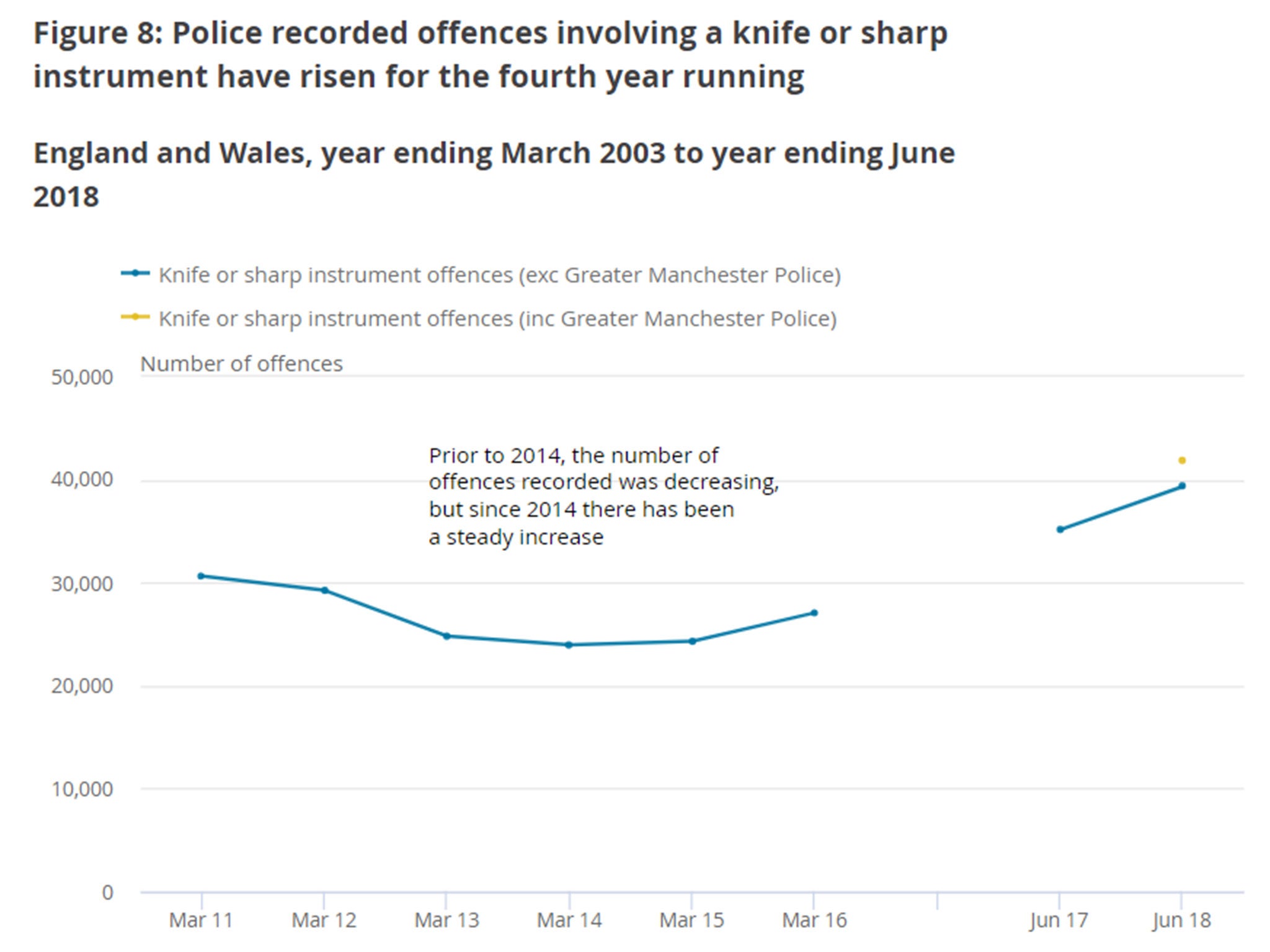Children 'more likely to be stabbed on way home from school', study suggests
Researchers call for preventative work targeting primary school children after analysing data on stabbed teenagers
Children may be more vulnerable to being stabbed on their way home from school, new research has suggested.
A study published in BMJ Open noted: “The period immediately after school accounts for a large proportion of incidents in children, and these predominantly occur close to home and school.”
Researchers analysed data on 1,824 people aged 25 and under who had been treated for a stab injury at a London trauma centre over the course of 11 years.
Of those, 172 were children, 861 were aged 16 to 19, and 791 were aged 20 to 24.
The findings may no longer depict patterns of attacks in the UK as the figures used end in 2014, which police leaders characterise as the start of a nationwide rise in violence.
The rise of “county lines” drug gangs, which use teenagers as mules, incitement on social media, a dramatic rise in knife possession among children and police cuts have significantly changed crime patterns in the past four years.
Knife crime is now at a record level, with police recording 39,332 offences in the year to June, amid rising murder and robbery.
Police leaders have compared violence to the “Wild West” and say they are finding children as young as nine carrying knives, as violence spreads to ever-younger children through siblings and peer groups.
The study’s authors said the “incidence of interpersonal violence involving knives” had progressively increased.
Between 2004 and 2014, the annual number of presentations for “assault resulting in penetrating trauma” rose by an average of 25 per cent each year.
Almost three-quarters of victims were from poorer areas, compared with just 1 per cent from richer districts.
The frequency of stab injuries rose sharply in the late teenage years, reaching a peak at age 18 before gradually declining.
Children were more likely to be stabbed on a school day than the older age group, with a “significant peak in frequency” between 4pm and 6pm.
Stabbings during this timeframe accounted for a fifth of all child stabbings, compared with 11 per cent in over-15s.
Young adults aged 16 and over were more likely to be stabbed after midnight compared with younger victims.
“In children the spike in frequency in the late afternoon and early evening was attributable to incidents occurring on school days,” the study’s authors wrote.
“The majority of stabbings in this timeframe on school days occurred within 5km of home, which encompasses the average distance from home to school in children living in London.”
This means that a “targeted preventative strategy” could help reduce stabbings among youngsters, according to the researchers from Queen Mary University of London, London Ambulance Service, Newcastle University, Barts Health NHS Trust and South East Coast Ambulance Service.
They also called for better educational programmes to reduce violence.
“The sharp increase in stab injuries between the ages of 14 and 16 suggests that educational programmes and other preventative interventions are best delivered in primary or early secondary education,” they wrote.
They highlighted violence reduction schemes in Glasgow, which have resulted in declines in knife crime and are now being reflected in policymaking in England and Wales.
In Scotland, the study found that “aggressive law enforcement” coupled with a range of educational and behavioural programmes which raise awareness of the consequences of knife violence led to the success – while funding for police and other public services elsewhere has been gutted.
“This work shows that children and young people in London are at risk simply due to where they live and go to school,“ said one of the study authors, Karim Brohi, a consultant trauma surgeon at Barts Health, professor of trauma sciences at Queen Mary University and director of the London Trauma System.
“A long-term multi-agency and community approach is needed if we are to change the culture of violence that now permeates deprived areas of London.
“Public health approaches to violence, such as with this study, can show who is at risk and allow the community and police to respond effectively – such as through after-school activities and targeted policing.”
Lead author Paul Vulliamy, surgical registrar at Barts Health and clinical lecturer at Queen Mary University, added: “We have demonstrated that there are age-specific epidemiological patterns of stabbings among young people, providing evidence for schools and children as specific targets for violence reduction strategies.
“We can reduce knife violence and unnecessary child deaths, but need long-term evidence-based interventions in education, policing, the community and at home.”

The report was released after five people were stabbed to death in London in the space of a week.
Father Rocky Djelal, 38, was killed in broad daylight in Southwark Park in Rotherhithe, southeast London on Wednesday.
The following day, 15-year-old Jay Hughes was killed in Bellingham, also in southeast London, by a stab wound to the heart.
Malcolm Mide-Madariola, 17, was fatally knifed on Friday outside Clapham South Tube station in south London, near where he studied.
On Sunday, Ayodeji Habeeb Azeez, 22, from Dagenham was fatally stabbed in Samos Road, Anerley, also in south London.
And on Monday night, a boy named locally as John died in front of his devastated mother of multiple wounds in Tulse Hill.
So far in London this year there have been 119 homicides, including two cases that are being treated as self-defence.
A third of the 117 remaining cases involved victims aged 16 to 24, while 20 were teenagers.
Additional reporting by PA

